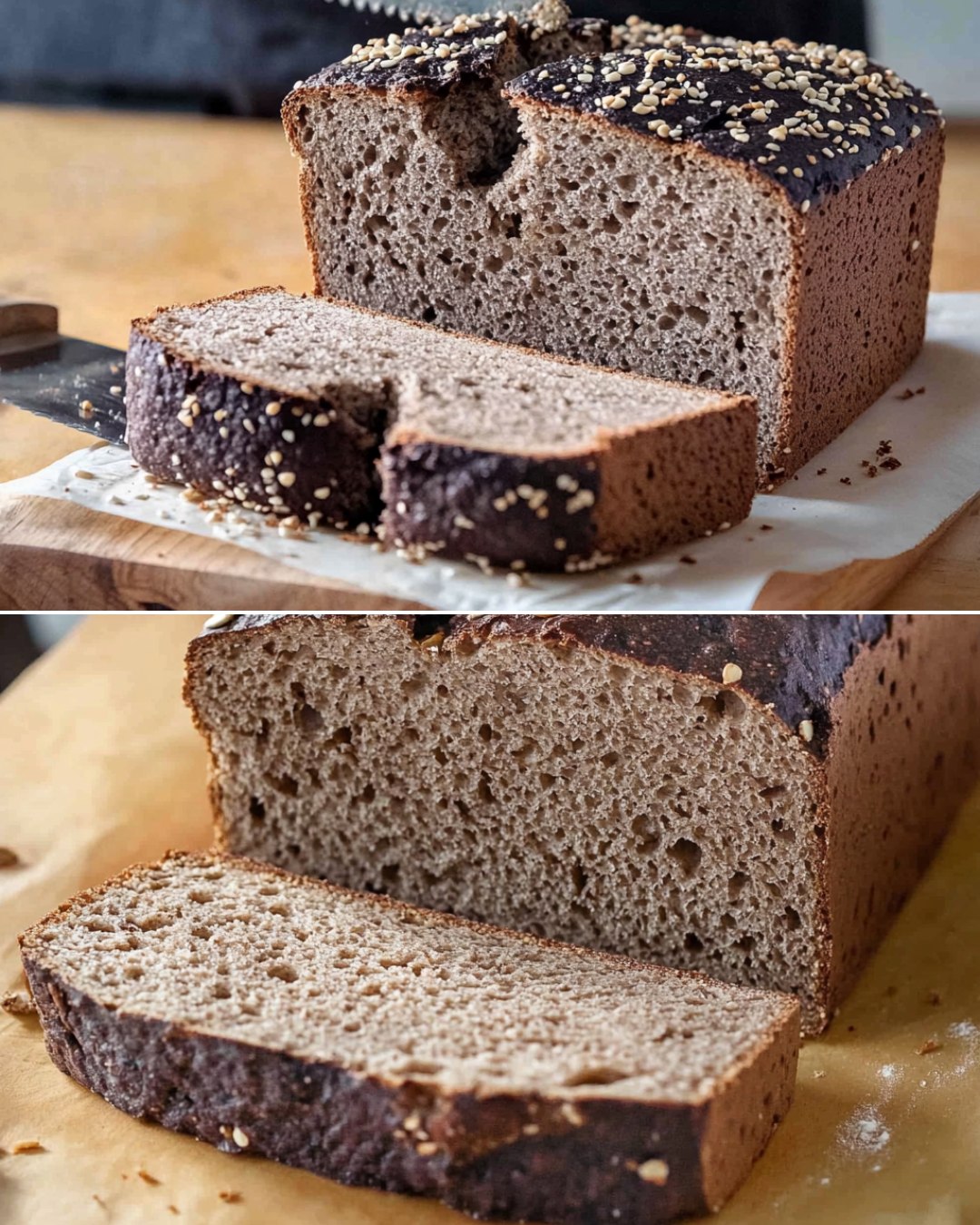ADVERTISEMENT
Step 3: Preheat the Oven
After the dough has fermented, preheat your oven to 375°F (190°C). If you have a Dutch oven, this is an ideal choice for baking as it helps maintain moisture and promotes an even bake. Alternatively, you can use a regular baking sheet.
Step 4: Shape the Dough
Once the dough has fermented, it should be slightly puffed and airy. Transfer it to a well-floured surface (use buckwheat flour to keep it gluten-free) and gently shape it into a round loaf. You don’t need to knead it much—just form it into a loaf shape that will fit your baking dish or pan.
Step 5: Bake the Bread
Place the shaped dough into your preheated oven. If you’re using a Dutch oven, cover it with the lid to trap in moisture. Bake for 30-40 minutes, checking the bread toward the end. The top should be golden brown, and when tapped on the bottom, it should sound hollow, indicating it’s fully baked.
Step 6: Cool and Enjoy
Remove the bread from the oven and allow it to cool on a wire rack before slicing. This bread is best enjoyed fresh but can be stored in an airtight container at room temperature for up to 3-4 days. If you have leftovers, you can also freeze it for longer storage.
Why This Recipe Works
This fermented buckwheat bread is the epitome of simplicity and nutrition. Because buckwheat flour doesn’t contain gluten, it doesn’t rise the same way as traditional wheat flour dough. The fermentation process helps to create a more airy texture without relying on added yeast or baking powder, giving it a light but hearty feel. The tangy, fermented flavor comes from the natural bacteria in the flour, making it a healthy choice for people who want to avoid commercial yeast or artificial ingredients.
Moreover, because the bread uses only buckwheat flour and water, it’s one of the most minimalist recipes you can make, yet it yields a wholesome, rustic bread perfect for sandwiches, toasts, or as a side to your favorite soups and salads.
Tips for the Perfect Fermented Buckwheat Bread
- Experiment with Fermentation Time: Longer fermentation times will yield a more robust, sour flavor. Try fermenting for 12 hours for a milder taste or up to 24 hours for a stronger tang.
- Add Seeds or Herbs: Feel free to add your favorite seeds (sunflower, chia, flax) or herbs (rosemary, thyme, etc.) into the dough for added flavor and texture.
- Check Consistency: If your dough is too thick and hard to stir, add a little more water to achieve the right sticky consistency. A thicker dough will result in a denser loaf, while a wetter dough will produce a softer, airier texture.
- Serve with Toppings: This bread pairs beautifully with various toppings like avocado, nut butter, or your favorite gluten-free spread.
Why Fermented Buckwheat Bread Is So Good for You
Fermented foods are known for their gut-health benefits, as the natural bacteria in the fermentation process act as probiotics. Eating fermented foods like this bread can help support digestion and promote a healthy microbiome. Additionally, buckwheat is a nutrient-dense food, full of fiber, antioxidants, and protein, making this bread a great choice for a healthy, filling snack or meal.
Conclusion: A Gluten-Free, Simple, and Nutritious Bread
Homemade fermented buckwheat bread is an incredible, easy-to-make gluten-free option for anyone looking to try something different in their baking. With just buckwheat flour and water, you can create a nutritious, tangy bread that’s perfect for anyone with dietary restrictions or simply seeking a new, wholesome bread option.
So why not give this simple recipe a try? In just a few easy steps, you’ll have a loaf of delicious fermented bread that’s good for your gut and a delight to eat!
